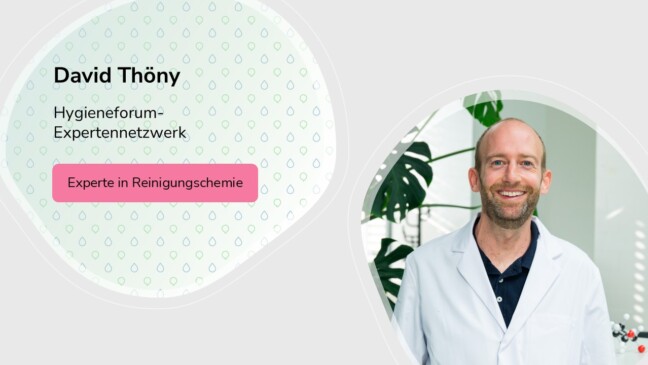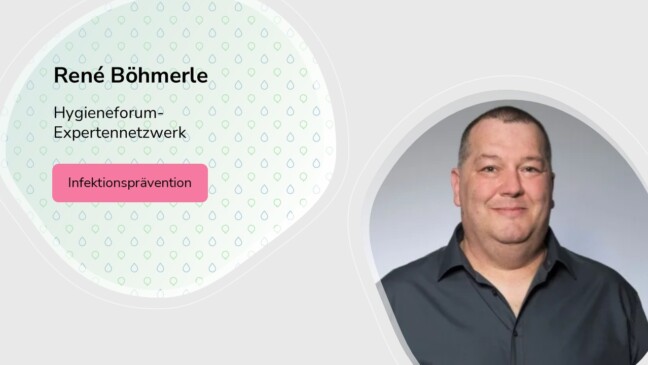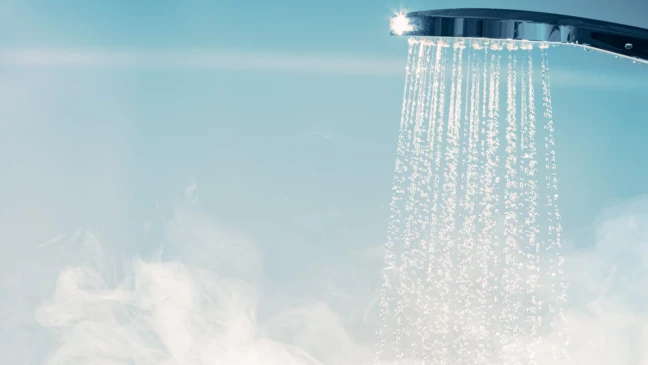
17.09.25
In conversation with Thomas Leiblein: Why water hygiene deserves more attention
Water is the number one foodstuff – and yet many people underestimate the risks posed by poor water hygiene. Thomas Leiblein, an expert in water, air and surface hygiene and a member of the Hygieneforum.ch expert network, explains why Legionella prevention is more important than ever and how businesses can strengthen their resilience through targeted audits.
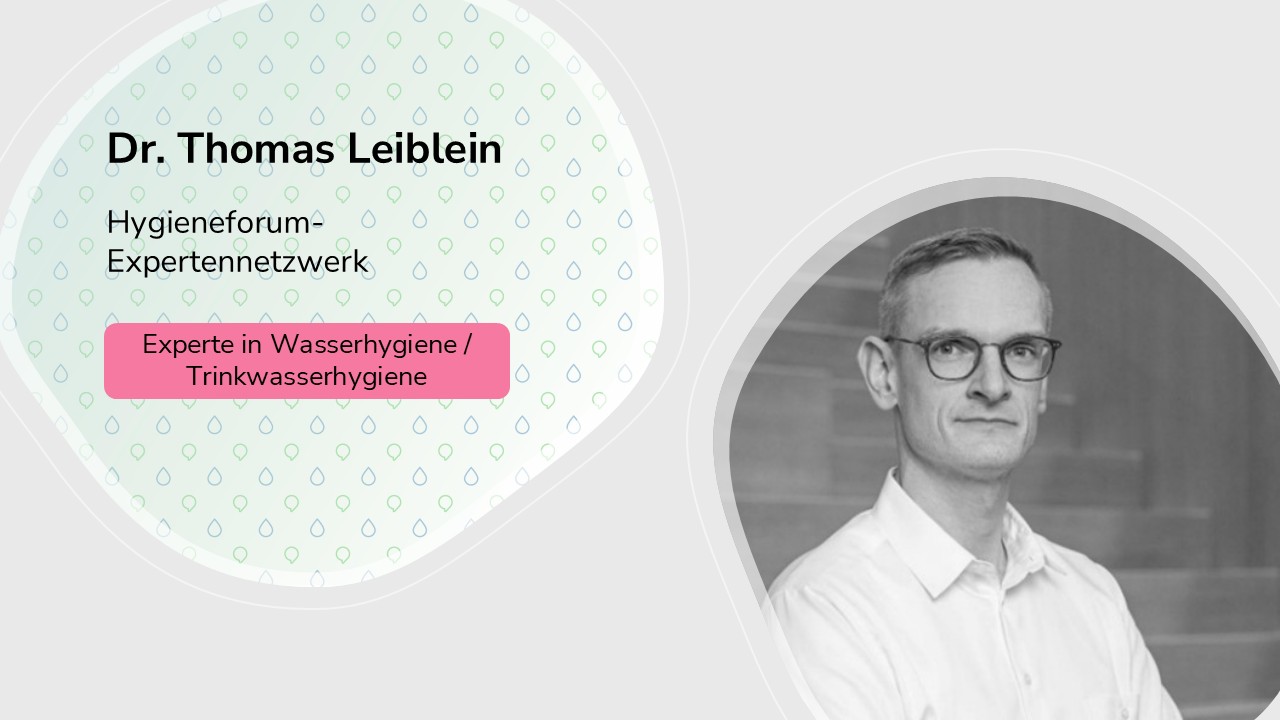
Thomas Leiblein holds a doctorate in life sciences and a degree in engineering (FH) with over 20 years of experience in hygiene and infection prevention. After working in research, teaching and hospital hygiene, he founded ewah AG – experts in water, air and hygiene together with partners in 2025. As a project manager and auditor, he advises companies on the implementation of water safety concepts, conducts hygiene audits and is considered a proven expert in drinking water hygiene and Legionella prevention.
Mr Leiblein, could you briefly tell us about your professional background and your specialisation in the field of hygiene and infection prevention?
I can now look back on more than 20 years of experience in the field of hygiene. My work has included the development and implementation of hygiene concepts, specific issues in process and risk management, hygiene monitoring/auditing, training and further education. My interest in hygiene grew during my time as a community service worker, when I worked in shifts in the internal ward of a hospital. This influenced my choice of career and set the course for my professional training. Connections between animate and inanimate environments, the invisible (microbiology, chemistry, physics) that influences human health were recognised in the practical university of applied sciences course, which led to a degree in nutritional and hygiene technology, at a corresponding educational institution. After a contract in building cleaning with the Dorfner Group in Munich, I moved to Switzerland in 2008 to join the Institute for Facility Management at the ZHAW (Zurich University of Applied Sciences), where I worked as an assistant alongside Thomas Hofmann, a passionate chemist, scientist, occupational hygienist and decontamination expert with extensive management experience, working on specialised issues from industry, project planning, R&D, but especially in the field of training and further education.
After almost 10 years at the institute, the time came for a change. I subsequently became directly involved in healthcare, shifting my focus from facility management to a specialist and management role in hospital hygiene at the Swiss Hirslanden Clinic Group, with a strong emphasis on quality and risk management. A defining feature of this role was the collaboration and professional guidance on medical issues under Prof. Dr. Rami Sommerstein, an excellent infectious disease specialist and researcher. After three years there, and another three years in a specialist group specialising in drinking water hygiene at Vadea AG, a planning and engineering firm, the opportunity arose at the beginning of 2025 to found ewah AG as a partner with colleagues. I have been working there as a project manager ever since. As an interdisciplinary, broadly based, independent consulting firm, we offer services in the areas of building consultancy, water, air and surface hygiene as ‘experts in water, air and hygiene’. Our expertise in the field of drinking water hygiene is unique in Switzerland thanks to our specialist staff.
What motivated you to focus on water hygiene and Legionella prevention?
Water is the number one foodstuff. Without water, humans cannot survive for long and, from a purely biological point of view, are not much. Anyone who wants to support their health should lead a healthy lifestyle on various levels. However, there are influencing factors, including drinking water, that can lead to infections and diseases. In my doctoral thesis, I dealt with drinking water hygiene in healthcare buildings in various countries. During my research on this topic, I repeatedly found that the management structures of the companies on the one hand, and the organisation and access to specialist knowledge and the provision of necessary resources (e.g. implementation of regular, periodic maintenance work) on the other are decisive factors in determining whether and to what extent (changing) requirements for the areas responsible for drinking water installations are taken into account and fulfilled. I therefore defined my research title to reflect precisely these areas of consideration: “Water safety management, Legionella prevention and risk management in hospitals: A framework for property and facility management in England”. Thanks to my own specialist and management position in a Swiss healthcare company, I was literally at the “source” of events and was able to experience first-hand the challenges of necessary management and change processes in thinking and acting, leading to greater process reliability in the area of mandatory self-monitoring.
What is water hygiene and what topics does it cover?
Water hygiene is a broad field, just like the path water takes from its source to the end user. In businesses that supply users with different water qualities, water may be subject to different quality requirements. Here, it is first necessary to know for what purpose/process/use water is required. Technical treatment steps and appropriate equipment can influence the criteria imposed on the water in such a way that chemical, microbiological and physical parameters can be adjusted to target values or tolerance ranges. However, two things should always be borne in mind:
- Drinking water is not sterile water
- If you influence the water quality, the chemical, microbiological and physical properties of the water inevitably change.
As a result of such changes, whether deliberately brought about or caused by faulty installations, quality losses and even risks (technical, relating to systems or products) can arise, including health hazards.
The aim of water hygiene is therefore to monitor and control the quality of water in a multifactorial overall assessment to such an extent that no health hazards arise and that processes can be operated as intended (as designed and planned).
How important are water hygiene and, in particular, Legionella prevention today?
Water hygiene is becoming increasingly important. We are seeing this in many areas, particularly in drinking water hygiene. On the one hand, regulations regarding hygiene requirements for drinking water have increased in recent years and continue to do so today – I would highlight, for example, the widespread recognition of hygiene issues and associated standards and guidelines in the planning and construction industry, or the updated FOPH / BLV modules “Recommendations on Legionella and Legionellosis” – on the other hand, more and more questions are arising in connection with water hygiene, which can also be interpreted as a consequence of the shortage of skilled workers, changed supply chains, rising costs for sustainably designed buildings and changing climatic conditions. Legionella bacteria thrive in favourable conditions. This is the case at temperatures between 25°C and 45°C (and slightly above) with an adequate supply of nutrients. However, other factors also come into play, meaning that common “everyday strategies” for containing contaminated drinking water installations are sometimes only partially successful. Companies need to shift their focus towards a more preventive approach with concrete measures for a long-term successful (confident) strategy. In some cases, builders, architects, owners, landlords and tenants are still unaware or uncertain about hygiene risks and self-monitoring obligations, or even have a counterproductive attitude based on the negative mindset that “it wasn’t a problem in the past”.
In addition to project management, you also offer hygiene audits. What is the significance of these hygiene audits and how do they work?
Our audits cover the area of environmental hygiene. We distinguish between three modules, namely drinking water hygiene, air hygiene and operational hygiene, which includes, for example, classic surface hygiene. In our audits, we examine existing hygiene concepts on a contractual basis for their robustness and identify potential for optimisation. The aim is for those responsible in the companies to (re)align their hygiene concepts with the state of the art. The audits are conducted in several stages, beginning with a preliminary discussion and a review of the relevant documents (planning documents, process documents, test reports, etc.). This is followed by a short interview sequence and an inspection. A report is then prepared and discussed with those responsible and management in order to present the initial situation transparently (fit-gap analysis / identification of non-conformities / discussion of measures). These external audits enable companies to strengthen their resilience. They sharpen their own skills during the audit.
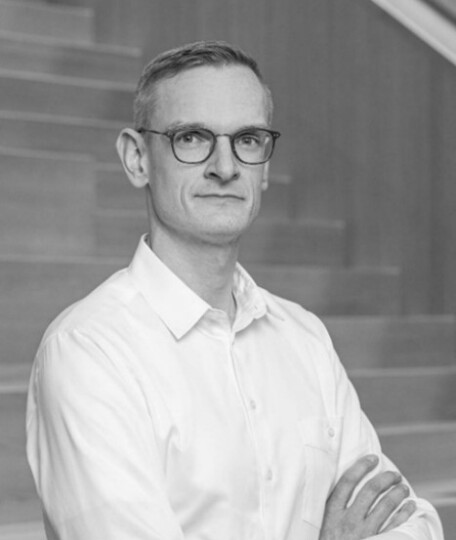
Dr. Thomas Leiblein
Education: PhD, MSc ZFH in Life Sciences, Dipl.-Ing. (FH), specialising in hygiene
Currently: Project manager, auditor at ewah AG – experts in water, air and hygiene
Network of experts: hygieneforum.ch/hygiene-experten/
In which types of buildings is water hygiene and the associated water safety concept particularly important?
Water hygiene is essentially an issue for every type of building. Table 1 of the SVGW guideline W3/E4, which describes state-of-the-art self-monitoring in building drinking water installations, distinguishes between different building categories. It is not surprising that healthcare facilities in particular, such as hospitals and retirement and nursing homes, have more frequent inspection intervals than other building categories, such as hotels/accommodation facilities, school and sports facilities, and generally accessible areas with shower facilities. This is because these facilities are frequented by vulnerable and/or immunocompromised groups of people who are particularly susceptible to infections caused by waterborne pathogens.
All types of buildings have one thing in common: they are intended for a specific use. Self-monitoring essentially involves assessing the potential risks associated with drinking water installations and carrying out routine operational, temperature and microbiological (e.g. Legionella) checks, along with maintaining the installations and equipment. There are also mutual obligations to be observed in the owner-tenant relationship. A binding self-monitoring concept is therefore essential.
What are the biggest challenges in implementing water security concepts?
In general, the greatest challenge here is to raise awareness among stakeholders (e.g. during a planning and construction project) and those responsible for operations of any potential risks. In addition, concrete, operationally reasonable and consistent actions that address the requirements of a (problematic) initial situation play an important role. No one likes to deal with potential and perhaps even costly problem areas. This therefore requires targeted, independent communication and professional empathy. It is essential. Within the scope of our services, we see ourselves as mediators or ambassadors and are accustomed to communicating at different hierarchical levels and with different professional backgrounds. Nevertheless, the responsibility remains with the companies themselves and those responsible and decision-makers.
Can you give an example from your practice where a hygiene audit uncovered previously unknown problems or hazards?
I remember an early audit at a medical centre for reproductive medicine. After a preliminary discussion, the purpose of bringing in an external expert became clear. The audit content was categorised according to different levels of consideration. Existing documents were consulted in order to familiarise ourselves with the existing processes. Although the centre had established highly developed and conceptually well-thought-out processes in the area of practice hygiene and reprocessing, problems were nevertheless uncovered. The premises were rented. During the audit, microbiological limit values were found to have been exceeded in the drinking water installation, which even affected the cold water system and were passed on to the drinking water dispenser installed on the cold water network. In addition to the hygienically problematic use of the staff shower, this was a serious deviation from the target state. The “system boundary” and the owner-tenant relationship had to be clarified in the area of the building’s internal drinking water supply, and the distribution of roles for self-monitoring for the necessary measures planning and communication of the inadequate water quality had to be defined. Comparable gaps in hygiene concepts and the failure to take the necessary measures can also be seen in supply situations, e.g. in dental practices or rented doctor’s practices in hospital buildings.
What trends do you see in the area of water hygiene and infection prevention in the coming years?
I don’t want to talk about trends here, because in my opinion trends have a short-lived success, are not very binding and rarely contribute to responsible behaviour in the long term. They are usually either based on one-sided insights or radical or reckless pursuit of success or profit. At the expense of those who are susceptible to them. I see current and future challenges and, together with like-minded people, try to prepare for them and find solutions. Major issues in general will be the long-term availability of drinking water as a healthy resource and access to it – admittedly very global issues, as recognised by the WHO. But wastewater management also plays an important role. As do the challenges facing society with increasing antibiotic resistance. In this context, I refer to the federal government’s strategies in its One Health Action Plan StAR 2024–2027 and the minimum structural requirements for the prevention and control of healthcare-associated infections (HAIs) in Swiss acute care hospitals.
What motivates you personally to remain active in this field?
Although the topic of renewable energies concerns me more than ever, there is a famous quote from the mineral oil company Esso from the 1970s that says, “There’s plenty to do – let’s get to it!”. Since choosing my career, I have felt committed to the topic of hygiene, i.e. health. Unlike the “living water” described only in the Bible, which is good for my soul, my field of work gives me a sense of purpose in my career.
Articles published by Thomas Leiblein in the Hygieneforum

